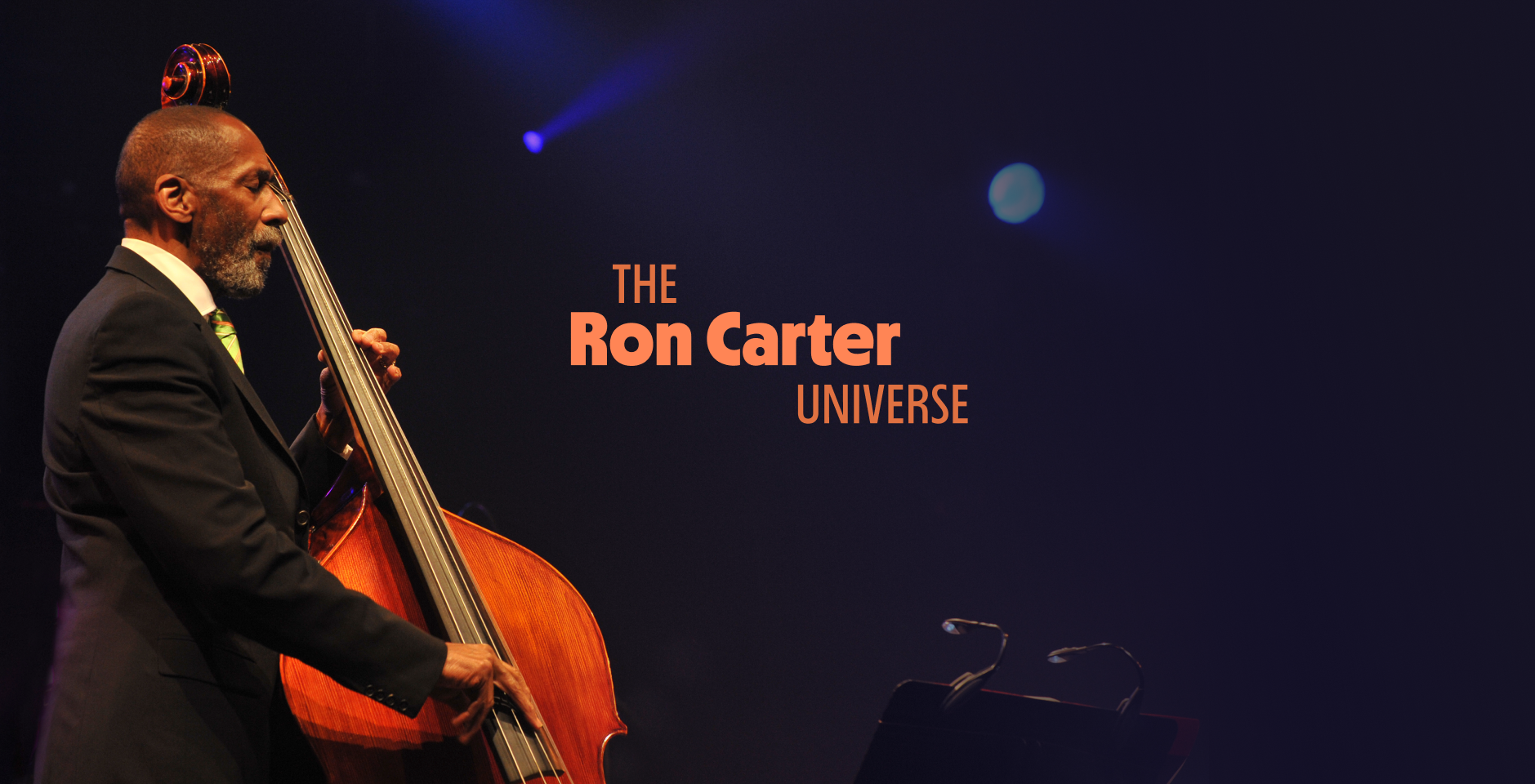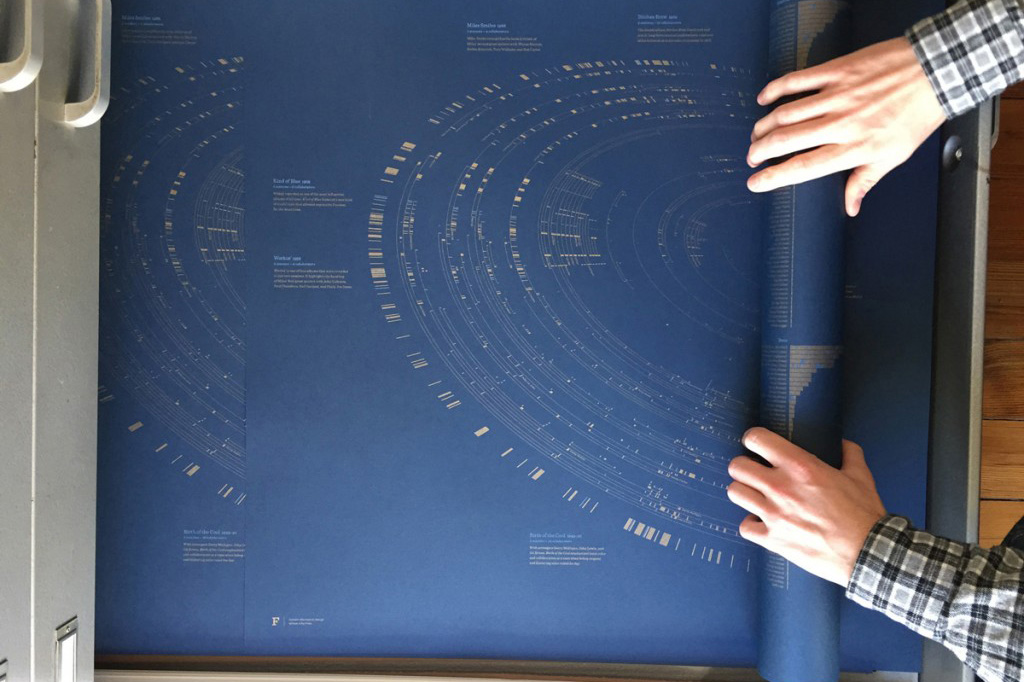

Back in 2014, Mark’s love for jazz motivated a project exploring the career of Miles Davis. Miles, one of the fundamental musicians in the history of jazz, was a central figure around which the genre emulsified and evolved. Fathom carried that centrality through into our visual representation, presenting Davis’s collaborations as threads chronologically emanating from his direction.
The Miles poster, both in print and its interactive online version, circulated around communities of jazz lovers. Eventually it found its way to one of Miles’s close collaborators: bassist Ron Carter, who joined the Miles Davis Quintet in 1963, and played alongside him for decades following. The project must have resonated with Mr. Carter, because one day, to our (but especially Mark’s) delight, we woke up to an email from his team. They wanted to know if we might be interested in designing an interface for exploring Carter’s own career. We met the challenge with enthusiasm, to say the least, and embarked on the journey through the legendary musician’s expansive discography.

I myself had never even heard of Ron Carter until that day. But I quickly realized that I had, in fact, heard him play many times. This is true for probably anyone who has listened to music — any music at all — in the past half-century. Carter currently holds the Guinness World Record for “most-recorded jazz bassist in history”, but that title, impressive as it is, fails to capture the magnitude of his influence in that genre and beyond. With his name logged on over 2,200 releases, you’ll find the seminal musician anywhere from orchestral symphonies and folk ballads to surrealist film soundtracks and modern hip-hop.
During the early-pandemic months at the beginning of our collaboration, Zoom calls were hardly something most people would look forward to. But each meeting with Carter (who we’d call “Maestro”) and his team left us revitalized and inspired. Penny and Simone brimmed with ideas fueled by anecdotes that we had the privilege of hearing from Maestro himself. He told us about wild recording sessions culminating in some of jazz’s greatest hits, about stops along world-tours to perform sold-out venues in Europe or film commercials in Japan, and more. He gave touching recollections of the mentors he had from a young age and later, as a father, stern conversations with musicians looking to him from a newer generation. Though transcribing these stories would be an endeavor beyond our capabilities, we could at least build an appropriate digital stage for them — an interface gracefully presenting Ron’s discography in its full scope, for anyone to experience organically across a map transcending time and genre. Over the next couple years (during breaks from our other, well, less musical projects), we worked with Ron and his team to methodically develop and refine an intuitive interface that could serve as a tool for anyone while remaining faithful to the functional and aesthetic sensibilities unique to the legendary bassist and the universe of sound he’s built over the last 60+ years.

Ron Carter and his team came to us inspired by the Miles Davis poster that Fathom created a few years back, but we quickly realized that this project would require a pretty different design approach. This was true conceptually and visually, beginning with the project’s basic formal constraints. It was to function not just as a retrospective archive, but an active tool that could continue to scale with Carter’s career (which shows no sign of slowing down). Maestro remains perennially on tour with his team, and they wanted to be able to pull something up on the go to illustrate conversations with friends, fans and ‘industry people’. We also agreed that it should be shareable beyond that embodied community, able to reach strangers and spark their curiosity. That meant catering to the internet’s portability as well as its social affordances — so rather than a static, printed poster, we set out to design a mobile-first web app suited to pollinate across social media.
Next, I’ll dig into how we leveraged the interactivity and dynamism of the web to provide an expansive and meaningful guide through Maestro’s discography, informed by everything we learned about him and what makes his career so unique. Building an interface to explore the multifaceted trajectory of one of jazz’s greatest contributors took a lot of iteration. In the following post, we’ll take a deeper dive into our design approach that eventually culminated in Ron Carter Universe, which you can check out here.
We’d love to hear what you’re working on, what you’re curious about, and what messy data problems we can help you solve. Drop us a line at hello@fathom.info, or you can subscribe to our newsletter for updates.